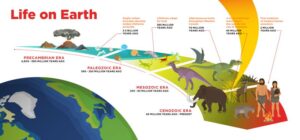Have you heard about The Commons? You own a piece of it; we all do. The Commons is something society shares as a public trust, and includes valuable assets such as the Internet, the broadcast spectrum, public lands, the ability to create money, the atmospheric carbon sink, and more. In times of scarcity, access to the Commons can be very valuable. We can all share in that bounty, and this can form a source of actual income to Americans. Here are a few ideas for creating a source of income for all people from the Commons with citizen’s dividends.
One example is a Cap & Dividend system, where greenhouse gas emissions from upstream fossil fuel companies are limited, and the revenues generated by the sale of permits are returned to individuals as a dividend. The reasoning is that we all share the sky, and so as the now-scarce resource becomes valuable, we should all be given our share.
Another Commons we all share is the money system. Money would not function without the trust of the community. We gave banks the monopoly on money creation, and then when they failed, we bailed them out. Unfortunately, we forgot to bail ourselves out. The money system is broken, but maybe the concept of the Commons can be used to fix it.
Remember the Gold Standard? Well, that’s history. Money these days is based on debt.
Money enters into the economy when it is lent into circulation by private banks. Ironically, given the recent complaints about the national debt, in our monetary system, one person’s financial debt is literally another person’s financial asset. We are programmed to think that debt is bad, but when a debt is paid off, money is taken out of circulation. Economic growth (taking out more loans) is the only thing that keeps the money supply from contracting and pushing into recession. The other part of the growth imperative is that loans must be repaid with interest, but the money to pay the interest must be found from other people’s loans. This creates scarcity and a competitive system, where some amount of bankruptcy is inevitable. But it doesn’t have to be this way.
The key to moving from a fragile debt-based economy that subjects people to boom-bust cycles, economic dislocations, and a constant societal anxiety and fear of scarcity, is to change the money system. One way to do this is by spending money into circulation instead of lending it. In 2011 Rep. Dennis Kucinich introduced the National Employment Emergency Defense Act, HR 2990, aka the NEED Act, a monetary reform bill by that would abolish the Federal Reserve, end fractional reserve banking, prohibit compound interest, and give 25% of money created to the states. In a nutshell, it would change the way money enters into the economy. Instead of entering the economy as debt that is owed to the private banks, money would enter as infrastructure spending. This could help reduce state and local government budget deficits, an approach the late economist Richard Douthwaite called ‘deficit- easing’.
The NEED Act would also give people money, in the form of Universal Citizens Dividends to every US citizen:
“. . . the Secretary [of the Treasury], in cooperation with the Monetary Authority, shall make recommendations to the Congress for payment of a Citizens Dividend as a tax-free grant to all United States citizens residing in the United States”
Groups advocating for what’s referred to as a Basic Income Guarantee see this as a way to address poverty, but there are other benefits as well.
Skeptics of the NEED Act will quickly assert that government spending money into circulation will lead to runaway inflation. In certain circumstances this is true. But many economists believe we are currently in a deflation, which would make the NEED Act’s approach to money creation benign as long as it is reined in before inflation takes hold.
Citizen’s dividends could even be implemented within existing laws by Federal Reserve Chairman Ben Bernanke. Starting after the 2008 financial crisis, Bernanke has implemented a program called “Quantitative Easing” (QE). QE is a form of bailout where the central bank purchases bank assets with newly created money. By flooding Wall Street (big banks) with money, it may have prevented more bank failures, but it is unclear if any of that new money is being lent to the productive parts of the economy, or that it goes any farther than bonuses to the 1%, which may end up sitting in tax-haven accounts in the Cayman Islands.
If the Fed wants to really stimulate the economy, it needs the money to actually reach the actual people who will spend it into circulation and create the demand so that employers will begin hiring again. The answer is simple: send the money to the people as a citizen’s dividend.
William Greider, in an article in The Nation wrote that Bernanke should focus on Keynesian infrastructure spending instead of big bank bailouts:
If Ben Bernanke can create trillions of dollars at will and spread them around the financial system, could government do the same thing to finance important public projects the people want and need? Daring as it sounds, the answer is, Yes, we can.
Roads and bridges are great, but with a citizen’s dividend some of those trillions would go straight to the people. Chairman Bernanke just announced the third round of quantitative easing, QE3. He should make QE4 a citizen’s dividend.






